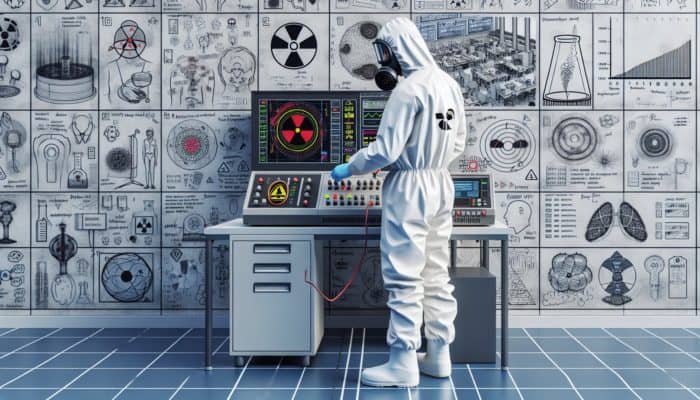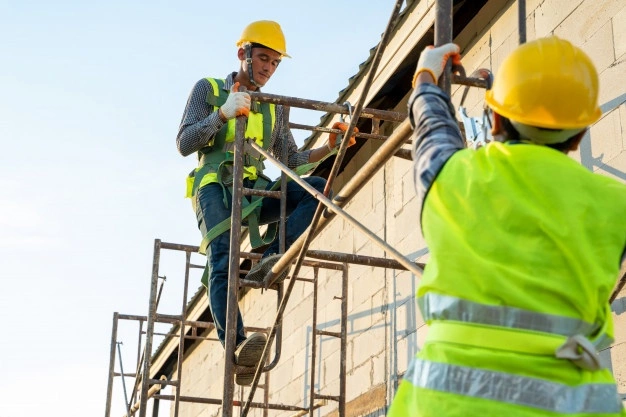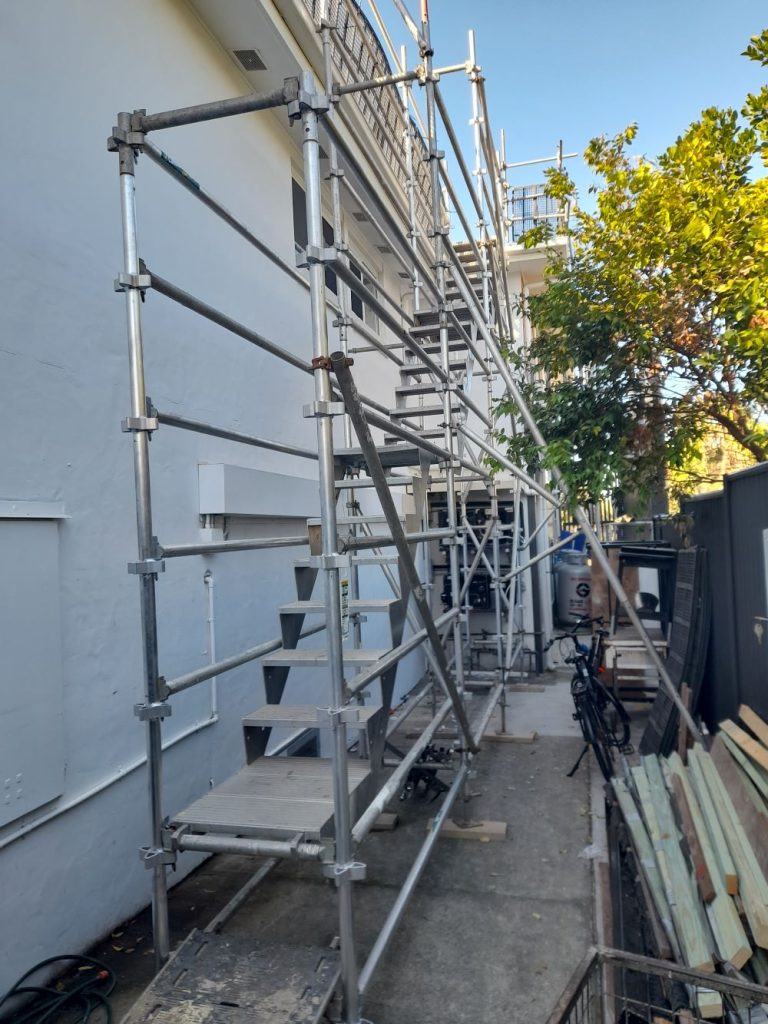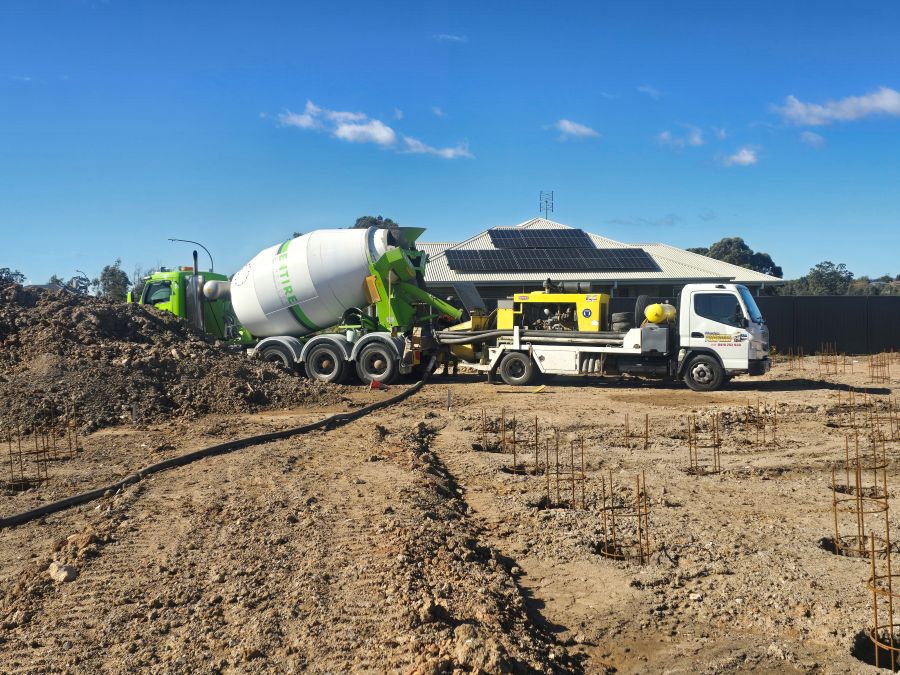Master the Essential Principles of Nuclear Radiation Safety for Maximum Protection
Adopt Key Strategies to Ensure Effective Radiation Protection

Grasping the essential principles that underlie radiation safety is vital for effectively minimising exposure to ionising radiation. The foundational principles encompass time, distance, and shielding. By reducing the time spent in radiation-affected areas, increasing the distance from radiation sources, and utilising proper shielding materials, individuals can significantly lower their risk of harmful exposure. This holistic approach not only shields individuals but also promotes a safer environment for the entire community.
To successfully implement effective radiation protection, diligent planning and unwavering adherence to these principles are necessary. For example, in medical facilities that deploy radiation for diagnostic and therapeutic purposes, it is crucial to develop strict protocols that limit the duration of time spent near radiation sources by both patients and staff. Increasing distance can be accomplished by establishing secure perimeters around radiation equipment, while shielding might involve the incorporation of lead aprons or specially designed protective walls that effectively absorb radiation.
These core principles serve as the bedrock for protecting workers and patients within healthcare environments and extend to nuclear power plants, research laboratories, and a variety of industrial settings. Each environment demands customised strategies that consider the specific types of radiation present and the activities conducted. Ultimately, embedding these principles into everyday practices fosters a safety culture beneficial to everyone in areas where radiation exposure may occur.
What Varieties of Ionizing Radiation Exist?
Ionizing radiation can be classified into three main categories: alpha particles, beta particles, and gamma rays. Each type possesses unique characteristics and health implications, necessitating tailored safety protocols that cater to their specific properties. Alpha particles, despite their inability to penetrate the skin, can result in severe internal damage if inhaled or ingested, highlighting the need for stringent controls in environments that manage materials emitting alpha radiation.
Beta particles exhibit a greater ability to penetrate, travelling several feet in the air and penetrating the skin to a limited extent. They present risks both from external exposure and internal ingestion, requiring the use of protective gear and the establishment of protocols within laboratories and medical settings. Gamma rays, known for their high penetrating power as a form of electromagnetic radiation, necessitate the use of heavy shielding materials, such as lead or concrete, to effectively obstruct their paths.
A thorough understanding of these types of radiation is crucial for developing effective safety management strategies and implementing focused training and protective measures. For instance, in medical imaging practices, where X-rays (a type of gamma radiation) are commonly used, appropriate shielding and safety protocols are essential to protect both patients and healthcare professionals from unnecessary radiation exposure.
How Are Global Regulatory Frameworks Shaping Radiation Safety Practices?
Global regulatory frameworks governing radiation safety may differ, yet they share a unified goal of safeguarding public health and the environment. Prominent organisations such as the International Atomic Energy Agency (IAEA) and the U.S. Nuclear Regulatory Commission (NRC) establish extensive guidelines that dictate the management of radioactive materials and devices that produce radiation. These regulations encompass a broad spectrum of requirements, from the handling of radioactive waste to defining necessary qualifications for personnel who work with radiation.
Compliance with these regulations is essential for ensuring safety and verifying that practices align with international standards. Facilities typically undergo rigorous inspections and are required to maintain detailed records pertaining to radiation exposure, equipment maintenance, and safety training initiatives. Failure to comply can result in severe penalties, underscoring the critical importance of adhering to established safety protocols.
Moreover, local regulatory authorities often tailor these frameworks to address specific regional conditions, considering factors such as population density and industrial activities. The collaboration between international guidelines and local regulations nurtures a robust safety culture, essential for protecting communities globally from radiation hazards.
What Essential Tools Are Used for Radiation Detection and Measurement?

Detecting and measuring ionizing radiation is fundamental to maintaining radiation safety, employing various tools and techniques tailored to specific environments. Instruments such as Geiger-Müller counters, scintillation detectors, and dosimeters play vital roles in monitoring radiation levels. These devices facilitate real-time detection, allowing prompt responses to potential exposure scenarios.
Regular calibration and maintenance of detection equipment are essential for providing accurate and reliable measurements. In research settings, proper calibration ensures that scientists can rely on their readings, which is crucial for both safety and the integrity of experimental results. Furthermore, training personnel in the correct usage of these devices amplifies the effectiveness of radiation safety protocols, empowering individuals to respond promptly when radiation levels exceed safe thresholds.
In addition to personal dosimeters worn by workers, fixed radiation monitoring systems within nuclear facilities continuously track environmental radiation levels, offering crucial data for emergency preparedness and public safety initiatives. The integration of advanced detection technologies significantly enhances proactive risk management, allowing facilities to uphold safe operational standards while protecting personnel and surrounding communities.
Unveiling Real-World Applications of Nuclear Radiation Safety
Showcasing Successful Radiation Safety Protocol Implementations
Investigating real-world examples of successful radiation safety implementations underscores the profound effect of stringent protocols and innovative strategies. A prominent case is the Chernobyl Exclusion Zone, where extensive safety measures have been instituted since the catastrophic event of 1986. This area has transformed into a living laboratory for studying the effects of radiation and recovery processes, highlighting the significance of long-term monitoring and management. Key strategies employed in the zone include:
- Strict access control measures aimed at minimising human exposure.
- Regular environmental radiation monitoring to track changes over time.
- Public education campaigns designed to raise awareness about radiation safety.
- Collaboration with international experts for the exchange of best practices.
Another successful instance can be observed in medical facilities that implement Radiation Safety Committees, which oversee the use of radiation and ensure adherence to safety standards. These committees establish protocols that encompass employee training, regular safety audits, and incident investigations to continuously enhance safety measures.
By examining these cases, organisations can identify effective strategies and tailor them to meet their specific needs. The insights gained from these implementations reinforce the necessity of comprehensive radiation safety programs that prioritise proactive measures, staff training, and community engagement to mitigate risks.
What Obstacles Are Faced in Upholding Radiation Safety Standards?

Enforcing radiation safety measures presents numerous challenges for organisations. One of the most pressing issues involves compliance, as staff may not consistently adhere to established protocols due to a lack of understanding or inadequate training. Additionally, technological limitations can pose significant barriers, particularly when outdated equipment undermines effective monitoring and safety practices.
To tackle these challenges, organisations should prioritise the development of robust training programmes that emphasise the significance of radiation safety and compliance. Regular drills and refresher courses can enhance staff knowledge and commitment to safety protocols. Furthermore, investing in modern detection and measurement technologies can greatly improve compliance and monitoring capabilities.
Engaging employees in the creation of safety protocols fosters a culture of accountability, ensuring that measures are practical and effective. By addressing compliance challenges and leveraging technology, organisations can significantly enhance their radiation safety initiatives, thereby reducing risks to personnel and the public.
What Perspectives Do Experts Provide on the Future of Radiation Safety Standards?
The future trajectory of radiation safety standards is poised for considerable evolution, propelled by technological advancements and shifting regulatory landscapes. Experts predict that innovations in radiation detection, such as digital dosimetry, will greatly enhance real-time monitoring capabilities, enabling immediate responses to potential hazards. These advancements will not only strengthen safety protocols in medical and industrial contexts but also streamline compliance processes, making them more efficient.
Regulatory changes are also anticipated, focusing on harmonising international standards to address the global challenges associated with radiation safety. Collaborative efforts among nations will facilitate the sharing of best practices and research findings, ultimately leading to more robust safety measures on a global scale.
As safety standards evolve, there will be an increasing emphasis on public education and community engagement. Informing communities about radiation sources, associated risks, and safety measures will empower individuals to take proactive steps in safeguarding themselves. By cultivating a more informed public, the industry can strengthen its safety culture and enhance resilience against potential radiation-related incidents.
How Does Nuclear Radiation Safety Affect Public Health?
Assessing Long-Term Health Effects of Radiation Exposure
The long-term consequences of radiation exposure can substantially impact public health, primarily resulting in increased risks for various types of cancer and potential genetic mutations. Scientific research indicates that prolonged exposure to ionizing radiation causes cellular damage that may later evolve into malignancies. This risk is especially pronounced for vulnerable groups, including children and pregnant women, making it essential to comprehend these implications.
A thorough understanding of these long-term effects is vital for effective public health planning and policy development. By analysing epidemiological data from populations exposed to radiation, health organisations can devise targeted interventions and screening programmes. This proactive strategy aims to identify at-risk individuals and implement early detection measures, ultimately mitigating the long-term health repercussions of radiation exposure.
Public health initiatives must also address the psychological impacts of radiation exposure, as fear and misinformation can exacerbate health risks. By delivering transparent, factual information about radiation safety and its implications, health authorities can help alleviate anxiety and support informed decision-making within communities.
How Can We Enhance Public Awareness and Education Regarding Radiation Safety?
Public awareness and education form the backbone of radiation safety, empowering individuals to understand risks and protective measures. Effective communication strategies are essential for disseminating information on safe practices in radiation-affected environments, such as hospitals, research facilities, and nuclear power plants.
Educational campaigns should target diverse demographics, utilising clear, accessible language to convey complex radiation safety concepts. Engaging the community through workshops, seminars, and online resources can help cultivate a culture of safety and vigilance. Additionally, involving local leaders and healthcare professionals in outreach efforts enhances credibility and broadens reach, fostering widespread understanding of radiation safety.
Moreover, public education initiatives should encompass emergency preparedness training, equipping individuals with knowledge about protective actions to take during a radiation incident. By fostering a well-informed populace, communities can bolster their resilience and response capabilities, ultimately contributing to overall public health and safety.
What Are the Most Effective Strategies for Minimising Public Radiation Exposure?
Minimising public exposure to radiation is critical for ensuring health and well-being. Several best practices can be employed to achieve this goal, including the development of comprehensive emergency response plans, public health advisories, and community education initiatives. Key strategies for minimising exposure include:
- Establishing exclusion zones surrounding areas with elevated radiation levels.
- Implementing regular surveillance and monitoring programmes to detect radiation levels.
- Conducting community drills to prepare for potential radiation emergencies.
- Providing clear signage and information regarding radiation risks and safety measures.
By actively engaging with the public and fostering collaboration between regulatory bodies and community organisations, authorities can create an informed environment prioritising safety. Additionally, promoting transparency in communications regarding radiation risks and safety practices builds trust and encourages community participation in safety initiatives.
Integrating these best practices into the public health framework strengthens the overall approach to radiation safety, ensuring a comprehensive strategy that protects both individuals and communities from radiation-related risks.
What Role Do Regulatory Measures Play in Ensuring Radiation Safety?
Regulatory measures are fundamental in enforcing radiation safety standards and protecting public health. Regulatory authorities formulate guidelines and requirements for the use and management of radioactive materials across different sectors, including healthcare, research, and industrial applications. These measures aim to reduce exposure risks and guarantee organisations comply with safety standards.
Regular inspections and audits conducted by regulatory agencies are critical for maintaining compliance and identifying potential safety deficiencies. Organisations must implement robust internal policies that align with regulatory requirements, encompassing comprehensive safety protocols, staff training programmes, and incident reporting processes. Ongoing monitoring and evaluation of safety practices ensure that facilities remain adaptable to evolving regulations and safety needs.
Furthermore, regulatory bodies frequently collaborate with international organisations to harmonise standards and share best practices. This global perspective enhances the overall effectiveness of radiation safety measures, ultimately safeguarding public health worldwide.
Why Is Continuous Monitoring and Surveillance of Radiation Levels Crucial?
Continuous monitoring and surveillance of radiation levels are essential components of radiation safety, facilitating timely detection and management of potential exposure risks. Establishing a comprehensive monitoring system involves deploying advanced detection technologies, such as fixed radiation detectors and portable monitoring devices, to track radiation levels across various environments.
Regular assessments and data collection empower organisations to identify trends and make informed decisions regarding safety measures. For example, in nuclear facilities, ongoing monitoring of radiation levels can trigger immediate responses to mitigate exposure risks and protect both workers and the surrounding community.
Moreover, providing public access to monitoring data fosters transparency and builds trust within communities. By keeping the public informed about local radiation levels and associated safety practices, authorities can enhance community awareness and preparedness, ultimately contributing to public health and safety.
Implementing Effective Radiation Safety Measures in Medical Applications
Harnessing Radiation in Diagnostic Procedures and Treatments
Radiation plays a pivotal role in medical diagnostics and treatment, offering crucial tools for detecting and managing various health conditions. Techniques such as X-rays, CT scans, and radiation therapy are vital in diagnosing diseases and treating cancers. However, these procedures require strict safety measures to protect both patients and healthcare professionals.
In diagnostic imaging, balancing the minimisation of patient exposure with the assurance of high-quality imaging is crucial. Radiologists must adhere to the principle of As Low As Reasonably Achievable (ALARA), advocating for the use of the lowest feasible radiation dose needed to obtain diagnostic information. This approach necessitates the utilisation of advanced imaging technologies that reduce radiation exposure while implementing rigorous quality control measures to ensure effective equipment operation.
In the realm of radiation therapy, safety precautions are of utmost importance. Patients receiving treatment must be meticulously monitored to minimise exposure to surrounding tissues and healthcare personnel. This process involves employing specialised equipment, such as lead shields and radiation safety barriers, designed to protect against unintended radiation exposure.
As medical practices continue to evolve, ongoing training in radiation safety for healthcare professionals remains essential. Staying current on the latest advancements in imaging and treatment technologies ensures that practitioners can deliver safe, effective care while minimising risks associated with radiation exposure.
How Can Healthcare Professionals Protect Themselves in Radiation Environments?
Healthcare professionals play a critical role in maintaining safety in environments with radiation, and several specific measures can effectively shield them. The use of personal protective equipment (PPE), including lead aprons, thyroid shields, and protective eyewear, is essential for reducing exposure during radiation procedures.
Moreover, adherence to established safety protocols is crucial. Healthcare professionals must receive training in the proper use of radiation equipment, understand the importance of maintaining safe distances from radiation sources, and be well-versed in emergency procedures in the event of accidental exposure. Regular safety drills can reinforce this knowledge and ensure preparedness for real-world situations.
Additionally, engaging in ongoing education and training programmes focused on radiation safety and best practices is vital. This commitment ensures that healthcare professionals stay informed about the latest regulations, technologies, and safety measures, fostering a culture of safety within healthcare organisations.
By prioritising safety and actively participating in training and education, healthcare professionals can effectively safeguard themselves and their patients from potential radiation hazards.
Why Is Regulatory Compliance Critical in Medical Radiation Safety?
Regulatory compliance in medical radiation safety is vital for protecting the well-being of patients and healthcare staff. Regulatory bodies, such as the U.S. Food and Drug Administration (FDA) and the American College of Radiology (ACR), establish standards governing the use of radiation in medical environments. Adhering to these standards is crucial for healthcare facilities to operate safely and effectively.
To ensure compliance, facilities must implement comprehensive quality assurance programmes that encompass equipment maintenance, personnel training, and safety audits. Regular inspections by regulatory agencies help identify compliance gaps and guarantee adherence to best practices. Additionally, maintaining detailed records of radiation exposure for both patients and staff is essential for effective monitoring and compliance.
Healthcare organisations should foster a culture of safety by developing internal policies that prioritise regulatory compliance. Encouraging open communication regarding safety practices and incidents can facilitate continuous improvement, ultimately protecting the health of both patients and staff.
Research-Driven Benefits of Nuclear Radiation Safety
Implementing Actionable Steps to Enhance Radiation Safety in Research Environments
Enhancing radiation safety in research settings is a complex yet achievable objective. Researchers can apply several actionable strategies to boost laboratory safety, ensuring compliance and protecting personnel from exposure. Key strategies include:
- Conducting regular training sessions centred on safety for all staff members.
- Establishing clear protocols for handling and storing radioactive materials.
- Implementing a robust incident reporting system to effectively address safety concerns.
- Regularly calibrating and maintaining radiation detection equipment to ensure accuracy.
By nurturing a culture of safety and compliance, research institutions can significantly enhance their radiation safety measures. This proactive approach not only protects personnel but also upholds the integrity of research findings, ensuring that scientific advancements progress without compromising safety.
Moreover, encouraging collaboration between researchers and safety officers promotes the sharing of best practices and fosters a collective commitment to radiation safety, ultimately benefiting the entire research community.
What Economic Advantages Stem from Strong Radiation Safety Protocols?
Implementing stringent radiation safety measures offers substantial economic benefits for both organisations and society. Firstly, enhanced safety protocols can lead to reduced healthcare costs associated with radiation-related illnesses, including cancer treatments and long-term care. By minimising exposure risks, organisations can prevent health issues that might otherwise burden healthcare systems.
Furthermore, organisations prioritising radiation safety often experience increased productivity. Employees working in safe environments tend to be more engaged and focused, which translates to higher job satisfaction and lower absenteeism. This positive workplace culture fosters superior performance and greater levels of innovation.
In addition, robust radiation safety programmes improve an organisation’s reputation, attracting partnerships and funding opportunities. Stakeholders are increasingly vigilant regarding safety and compliance, and organisations demonstrating a commitment to radiation safety are more likely to gain a competitive edge in their respective markets.
Ultimately, investing in radiation safety is not only a moral and legal obligation; it is also a prudent economic decision that benefits individuals, organisations, and society as a whole.
What Innovations Are Transforming Radiation Safety Monitoring Technologies?
Innovations in radiation safety monitoring technologies are revolutionising how organisations manage and respond to radiation risks. Advanced solutions, such as smart dosimeters that provide real-time feedback on exposure levels, greatly enhance safety across various settings—particularly in medical and research environments. These devices enable personnel to take immediate action should exposure levels approach hazardous thresholds.
Moreover, the development of automated monitoring systems equipped with sophisticated algorithms facilitates continuous surveillance of radiation levels within facilities. These systems can alert staff to abnormal radiation spikes, ensuring swift responses to potential hazards. This proactive approach significantly reduces the risk of prolonged exposure, protecting both employees and the public.
Advancements in data analytics also present new opportunities to refine radiation safety practices. By analysing historical exposure data, organisations can identify patterns and trends, thereby optimising safety protocols and enhancing training programmes. As technology continues to evolve, the potential for improved radiation safety monitoring will only expand, further safeguarding public health and safety.
What Are the Essential Components of a Comprehensive Radiation Safety Programme?
Establishing Robust Safety Protocols for Effective Radiation Management
Developing comprehensive safety protocols is a fundamental aspect of effective radiation management. The process of formulating these protocols begins with conducting thorough risk assessments to identify potential hazards associated with radiation use in specific environments. Engaging a multidisciplinary team, including radiation safety officers, health physicists, and administrative personnel, ensures that all perspectives are taken into consideration.
Once risks are identified, organisations can create targeted safety protocols that outline the procedures for safely handling, storing, and disposing of radioactive materials. These protocols should be easily accessible and communicated regularly to all staff to promote compliance.
Incorporating continuous improvement practices into safety protocols is vital for adapting to changes in technology, regulations, and best practices. Regular reviews and updates of protocols, along with employee feedback, foster a culture of safety and vigilance, which are essential for effective radiation management.
Training and Certification for Professionals Working with Radiation
Training and certification for individuals working with radiation are crucial for ensuring safety and compliance in various environments. Organisations must provide comprehensive training programmes that encompass the fundamentals of radiation safety, including exposure risks, protective measures, and emergency response procedures.
Certification programmes should be developed in collaboration with authoritative bodies to ensure they meet established safety standards. Regular recertification is essential for keeping knowledge current regarding evolving regulations and technologies.
Hands-on training experiences, including simulations and real-world scenarios, reinforce theoretical knowledge and prepare workers for practical challenges. By investing in education and certification, organisations empower their staff to take proactive roles in radiation safety, ultimately enhancing the safety culture and compliance.
How Can Organisations Foster Continuous Improvement in Safety Practices?
Encouraging continuous improvement in radiation safety programmes requires a proactive approach that prioritises regular audits and feedback mechanisms. Organisations must establish a routine schedule for conducting safety audits, assessing compliance with established protocols, and identifying areas for enhancement.
Incorporating employee feedback is equally critical. Encouraging open lines of communication regarding safety concerns and suggestions nurtures a culture of accountability and collaboration. Staff members often have valuable insights that can lead to improved safety practices.
Additionally, organisations should remain informed about advancements in radiation safety technologies and regulations. Engaging in professional development opportunities and networking with industry peers enables organisations to adopt best practices and implement innovative solutions to enhance safety.
By continually assessing and refining safety programmes, organisations can adapt to changing circumstances, ensuring that radiation safety remains a top priority in their operational strategies.
Emergency Preparedness: Ensuring Radiation Safety
Creating Comprehensive Radiation Emergency Plans
Effective planning for radiation emergencies is crucial for minimising risks to public health and safety. Organisations must develop comprehensive emergency response plans that detail procedures for managing radiation incidents, including evacuation protocols and communication strategies.
These plans should involve collaboration with local emergency services, public health authorities, and community organisations to ensure a coordinated response during incidents. Regular drills and training exercises are essential for testing the efficacy of emergency plans, allowing personnel to practice their roles in simulated scenarios and ensuring readiness.
Clear communication channels are vital during a radiation emergency, facilitating the timely dissemination of information to affected individuals and the public. Organisations should establish dedicated communication pathways, such as hotlines and social media platforms, to relay updates and guidance during emergencies.
By prioritising emergency preparedness and planning, organisations can strengthen their resilience and ensure rapid responses to radiation incidents, ultimately protecting both personnel and the community at large.
What Immediate Actions Should Individuals Take During a Radiation Emergency?
In the event of a radiation emergency, individuals should take immediate and decisive action to protect themselves from potential exposure. The first step is to seek shelter indoors, ideally in a basement or a centrally located room with minimal windows. Closing all doors and windows helps prevent outside air from entering, thereby reducing exposure to radioactive materials.
Staying informed through official communication channels, such as local news outlets and emergency alert systems, is crucial. Following directives from authorities regarding evacuation or shelter-in-place orders is essential for ensuring personal safety.
If evacuation is advised, individuals should act swiftly while avoiding unnecessary exposure. Covering the mouth and nose with a cloth or mask can help minimise inhalation of airborne radioactive particles. After evacuating, individuals should refrain from returning to affected areas until authorities declare them safe.
By remaining calm, informed, and attentive to official guidance, individuals can effectively safeguard themselves during a radiation emergency.
What Post-Emergency Recovery and Health Safety Measures Are Necessary?
Post-emergency recovery following a radiation incident requires thorough cleanup and long-term health and safety measures to protect public health. Immediate actions should focus on assessing contamination levels and implementing decontamination procedures to mitigate radiation exposure risks.
Authorities must conduct comprehensive environmental assessments to identify affected regions and establish safe re-entry protocols for communities. Public health advisories are crucial for informing residents about potential risks and recommended precautions during the recovery process.
Long-term safety measures include continuous monitoring of radiation levels in affected areas to ensure they remain within safe limits. Public health initiatives should also focus on educating individuals about ongoing risks and best practices to minimise exposure.
By prioritising recovery and health and safety measures, authorities can help communities rebuild with confidence, ensuring that public health remains a primary concern in the aftermath of a radiation emergency.
How Do Training and Drills Enhance Effective Emergency Preparedness?
Regular training and drills are fundamental to emergency preparedness for radiation incidents. Organisations should develop comprehensive training programmes that focus on radiation safety protocols and emergency response procedures. These programmes should incorporate hands-on exercises, simulations, and case studies to enhance understanding and application of safety measures.
Conducting routine drills reinforces training and ensures that personnel are well-versed in their roles during a radiation emergency. Simulated scenarios can challenge participants to respond quickly and effectively, fostering confidence in their capability to manage the situation.
Collaborating with local emergency services during drills can improve coordination and communication during actual incidents. By practising together, organisations can identify potential gaps in communication and response protocols, ultimately strengthening their emergency preparedness.
By emphasising training and drills, organisations can cultivate a culture of readiness, ensuring that personnel are equipped to handle radiation emergencies while safeguarding public health and safety.
What Effective Communication Strategies Should Be Employed During Radiation Emergencies?
Implementing effective communication during radiation emergencies is critical for ensuring public safety and minimising panic. Organisations must develop clear communication strategies detailing how information will be disseminated to the public and stakeholders during an incident.
Utilising multiple communication channels, including social media, radio, television, and emergency alert systems, ensures that messages reach a broad audience. Consistent messaging is crucial; authorities should provide updates on the situation, safety measures, and recommended actions for individuals to take.
Engaging community leaders and influencers can enhance the credibility and reach of communication efforts. Providing timely and accurate information fosters trust and empowers individuals to make informed decisions during emergencies.
Incorporating feedback mechanisms allows organisations to evaluate the effectiveness of their communication strategies and make necessary adjustments. By prioritising transparent and proactive communication, organisations can enhance public safety and preparedness in the face of radiation emergencies.
Frequently Asked Questions (FAQs) About Radiation Safety
What Does Nuclear Radiation Safety Entail?
Nuclear radiation safety encompasses protocols and practices designed to protect individuals and the environment from harmful exposure to ionizing radiation. It involves minimising risks through effective regulations, vigilant monitoring, and public education initiatives.
What Are the Primary Categories of Ionizing Radiation?
The main types of ionizing radiation include alpha particles, beta particles, and gamma rays. Each type has unique characteristics and health implications, requiring specific protective measures.
How Can I Ensure My Safety During a Radiation Emergency?
In a radiation emergency, seek shelter indoors, close windows and doors, and follow official guidance on evacuation or safety protocols. Staying informed through reliable sources is essential for your safety.
What Role Do Regulatory Bodies Play in Radiation Safety?
Regulatory bodies establish and enforce safety standards for the use of radioactive materials. They conduct inspections, provide guidelines, and ensure compliance to protect public health and safety.
What Components Should Be Included in a Radiation Safety Programme?
A comprehensive radiation safety programme should include thorough safety protocols, personnel training, regular audits, and emergency response plans. Continuous evaluation and improvement are also critical components.
How Does Radiation Exposure Affect Public Health?
Radiation exposure can lead to long-term health consequences, including heightened cancer risk and potential genetic mutations. Understanding these risks is vital for public health planning and safety measures.
What Are Some Effective Practices for Minimising Radiation Exposure?
Best practices encompass establishing exclusion zones, conducting regular radiation monitoring, implementing emergency drills, and providing clear public information about radiation risks and safety protocols.
Why Is Public Education on Radiation Safety Important?
Public education on radiation safety empowers individuals to comprehend risks and protective measures, fostering a culture of safety and preparedness within communities.
How Can Healthcare Workers Safeguard Themselves When Using Radiation?
Healthcare workers can ensure their safety by utilising personal protective equipment, adhering to established protocols, participating in ongoing training, and remaining informed about the latest radiation safety practices.
What Are the Economic Advantages of Implementing Radiation Safety Measures?
Robust radiation safety measures can reduce healthcare costs associated with radiation-related illnesses, enhance workplace productivity, and improve organisational reputation, thereby yielding broader economic benefits for society.
Join our journey on X!
The post Nuclear Radiation Safety: Essential Guidelines and Practices appeared first on Survival Bite.
The Article Nuclear Radiation Safety Guidelines and Best Practices Was Found On https://limitsofstrategy.com







